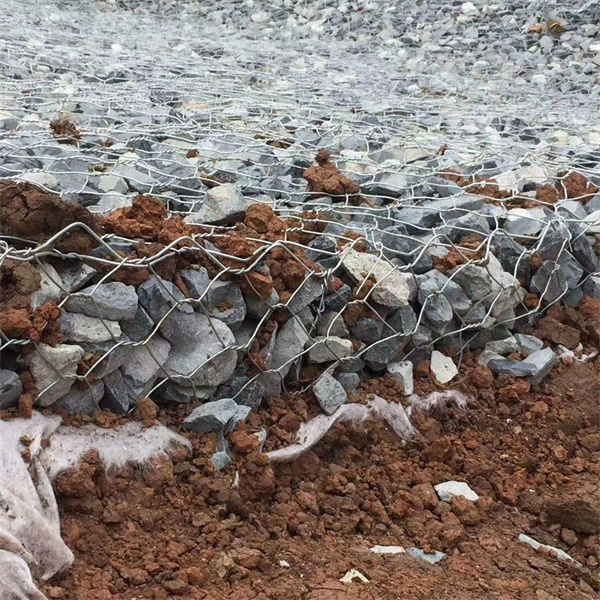ਦਸੰ. . 01, 2024 14:03 Back to list
gabion wall as retaining wall supplier
Gabion Walls as Retaining Wall Solutions
When it comes to the construction and design of retaining walls, gabion walls have emerged as a popular choice among civil engineers and landscape architects. These structures, made from wire mesh baskets filled with stones, offer not only functionality but also aesthetic appeal, making them an excellent solution for various landscaping and structural needs.
What are Gabion Walls?
Gabion walls are essentially cages or baskets filled with rock, stone, or concrete. They are often used in landscaping for retaining soil and preventing erosion, serving both a practical and decorative purpose. Gabions are typically made from galvanized or PVC-coated steel wire mesh, which ensures durability and resistance to rust and corrosion. The flexibility of gabions allows them to adapt to changing site conditions while providing the necessary support to retain soil and withstand lateral pressure.
Advantages of Gabion Walls
1. Environmental Benefits Gabion walls are considered environmentally friendly because they allow for natural drainage. Water can seep through the stones, preventing hydrostatic pressure buildup behind the wall, which is often a significant cause of failure in traditional retaining structures. This drainage capability reduces the risk of erosion and helps maintain groundwater levels.
2. Aesthetics Unlike traditional concrete or block walls, gabion walls can blend seamlessly into the natural landscape. The use of local stone can create a more pleasing, rustic appearance. This is particularly appealing in residential, park, and nature conservation projects, where the beauty of the environment is crucial.
3. Cost-Effectiveness Gabion walls can be less expensive to construct than traditional retaining walls, particularly in areas where materials are readily available. The labor costs may also be lower, as the installation of gabions is relatively straightforward. Additionally, due to the longevity and low maintenance requirements of gabion walls, they can provide savings in the long term.
4. Versatility Gabion walls can be used in various applications, including landscaping, erosion control, and as part of larger civil engineering projects. They can be constructed in different sizes and shapes, tailored to meet specific site requirements, and can be stacked to achieve the desired height.
5. Stability and Strength Properly designed and installed gabion walls have impressive structural integrity. The weight of the filled baskets provides considerable resistance against lateral earth pressures, making them an effective option for retaining walls in areas with challenging soil conditions.
gabion wall as retaining wall supplier

Installation of Gabion Walls
The installation of gabion walls involves a few key steps
1. Site Preparation Before any construction begins, the site needs to be prepared. This may involve clearing the area, leveling the ground, and ensuring proper drainage.
2. Foundation A stable foundation is essential for the durability of the gabion wall. Depending on the height and conditions, a footing may need to be excavated to provide a solid base.
3. Placement of Gabion Baskets The wire mesh baskets are assembled on-site or pre-fabricated. Once in place, they are filled with stones, ensuring that the stones are tightly packed for stability.
4. Backfilling and Compaction Once the first row of gabions is filled, additional layers can be added. Backfilling with soil behind the wall is critical for performance, and it should be compacted to prevent settlement.
5. Finishing Touches Additional landscaping elements, such as planting vegetation on the slopes, can enhance the appearance and function of the wall.
Conclusion
Gabion walls are an excellent option for those looking for a combination of functionality and beauty in their retaining wall designs. Their environmental benefits, cost-effectiveness, and versatility make them an ideal choice for many projects. As awareness of sustainable construction practices grows, gabion walls continue to gain popularity, proving that retaining walls can be both practical and visually appealing. Whether used in residential landscaping, civil engineering projects, or erosion control, gabion walls represent a modern approach to an age-old structural challenge, marrying nature and human craftsmanship beautifully.
-
Visualizing Gabion 3D Integration in Urban Landscapes with Rendering
NewsJul.23,2025
-
The Design and Sustainability of Gabion Wire Mesh Panels
NewsJul.23,2025
-
The Acoustic Performance of Gabion Sound Barriers in Urban Environments
NewsJul.23,2025
-
Mastering the Installation of Galvanized Gabion Structures
NewsJul.23,2025
-
Gabion Boxes: Pioneering Sustainable Infrastructure Across the Globe
NewsJul.23,2025
-
Custom PVC Coated Gabion Boxes for Aesthetic Excellence
NewsJul.23,2025
-
Installation Tips for Gabion Wire Baskets in Erosion Control Projects
NewsJul.21,2025






